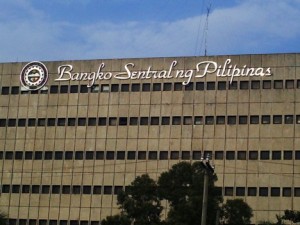BSP seen to raise key rates
The spike in last month’s inflation may force Bangko Sentral ng Pilipinas (BSP) to tighten its monetary policy further.
According to an economist from British banking giant HSBC, the regulator may have to raise the reserve requirement, the overnight interest rate and the special deposit account (SDA) rate, after inflation rose more than expected in May on higher food and housing prices. This in turn reflected supply-side constraints and excess liquidity.
“As the summer months approach, headline inflation will edge even closer to the upper end of the BSP’s 3-5 percent target range. This leaves the central bank little choice but to raise the reserve requirement ratio by 1 percentage point to 21 percent,” said HSBC economist for Asia Trinh Nguyen in a commentary released Friday.
The BSP is also expected to hike its main policy and SDA rates by 25 basis points when its Monetary Board convenes on June 19.
“This will signal the central bank’s commitment to temper inflationary pressures. Operational costs will rise but only marginally,” the analyst said.
The acceleration of headline inflation in May reflected both cyclical and structural issues. For instance, she said, the negative supply shocks brought on by Supertyphoon “Yolanda” continued to linger, causing food and housing prices to rise.
At the same time, higher temperatures are causing vegetable prices to rise, pushing food prices even higher. With the impact of the positive output gap still filtering through and food and energy prices expected to spike in summer, headline inflation may test the upper end of the BSP’s 2014 target range of 3-5 percent, Nguyen said.
“More worrying are long-term structural issues. Production, whether it’s food or electricity, is still short of what’s needed to keep up with rising demand,” she added.
The dry spell is seen to exacerbate these supply constraints as the El Niño weather disturbance may bring about below-average rainfall in the fourth quarter through the first quarter of 2015.
Excess liquidity is likewise considered a “headache,” with domestic liquidity having accelerated sharply in recent months on higher deposits and currency in circulation. Credit growth also rose, further stoking inflationary pressures.


